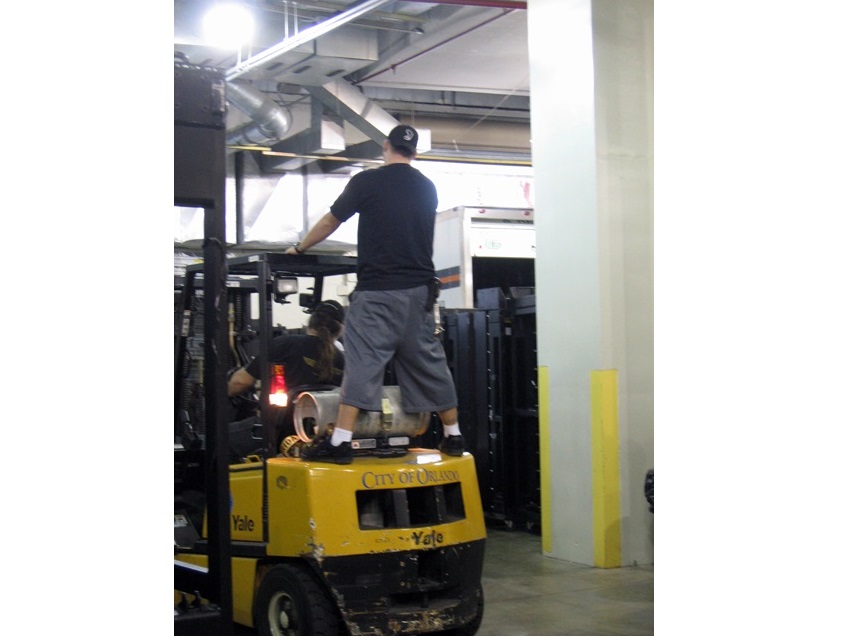Spot The Safety Violations: Powered Mobile Equipment Is for Moving Materials, Not Men
Powered Mobile Equipment Is for Moving Materials, Not Workers
A trained OHS inspector seeing this would issue not 1 but 2 citations—can you spot them both’
The first, and obvious violation is being committed by the worker riding on the back of the forklift.
The second violation, which is even more egregious but harder to detect, is is being committed by the driver who’s allowing him to do so—something a properly certified and conscientious forklift operator should never do.
The Moral: Letting workers hitch a ride on the back of a forklift the way this worker is doing violates your OHS duty ensure that:
- Unauthorized personnel don’t ride on powered mobile equipment; and
- Personnel who are allowed to ride are provided a safe place to do so—standing on the back of the forklift like the worker in the photo doesn’t count as a safe place.
WHAT’S AT STAKE
3 Reasons to Pay Attention
If you tolerate this kind of foolishness with forklifts and other powered mobile equipment (PME) at your workplace, OHS violations should be the least of your concerns. Consider that:
- Roughly 1 in 6 of all work fatalities are the result of PME accidents;
- PME accidents are among the leading causes of serious time-loss injuries;
- At least 20% to 25% of PME accidents occur because the operator wasn’t adequately trained
12 TRAINING REQUIREMENTS FOR PME OPERATORS
The operator is the focal point of PME safety. That’s why OHS laws ban workers from operating forklifts and similar equipment—unless and until they get proper training. At a minimum, such training must cover:
- Operating instructions, warnings and precautions relating to the particular type of PME the worker is authorized to operate

- Differences between operating the PME and driving a car or other vehicle
- Where the PME’s controls and instruments are located, what they do and how they work

- How the PME’s engine/motor operates
- How to steer and maneuver the PME

- Visibility, i.e., the importance of the operator’s being able to see while driving both forward and reverse, with and without a load

- Fork and attachment adaptation, operation and use limits

- The PME’s capacity, i.e., what it can/can’t do and safely carry
- The PME’s stability, i.e., how it can roll over and steps necessary to ensure that it doesn’t

- Doing any inspection or maintenance on the vehicle that the operator is required to perform

- Refueling and/or charging and recharging batteries safely

- Operating limitations, e.g., how fast the PME can go, what kinds of surfaces it can and can’t be used on, etc.

8 PME DRIVING DO’s & DON’Ts
In addition to the above training, PME operators should be schooled in the following Do’s and Don’ts:
| DO turn off the engine before refueling the PME DON’T ever operate PME if they don’t have the proper training—EVER DO look in the direction they’re travelling at all times DON’T carry others as passengers—like the operator is doing in the above photo –or use the PME to lift a pallet while somebody’s standing on it DO conduct a visual inspection of the forklift at the start of the shift before using it DON’T try to move loads that weigh more than the PME’s safe lifting capacity DO place forks under the load as far as possible DON’T park PME on an incline unless the wheels are safely blocked |
REMEMBER,
This. . .
. . . can lead to this
